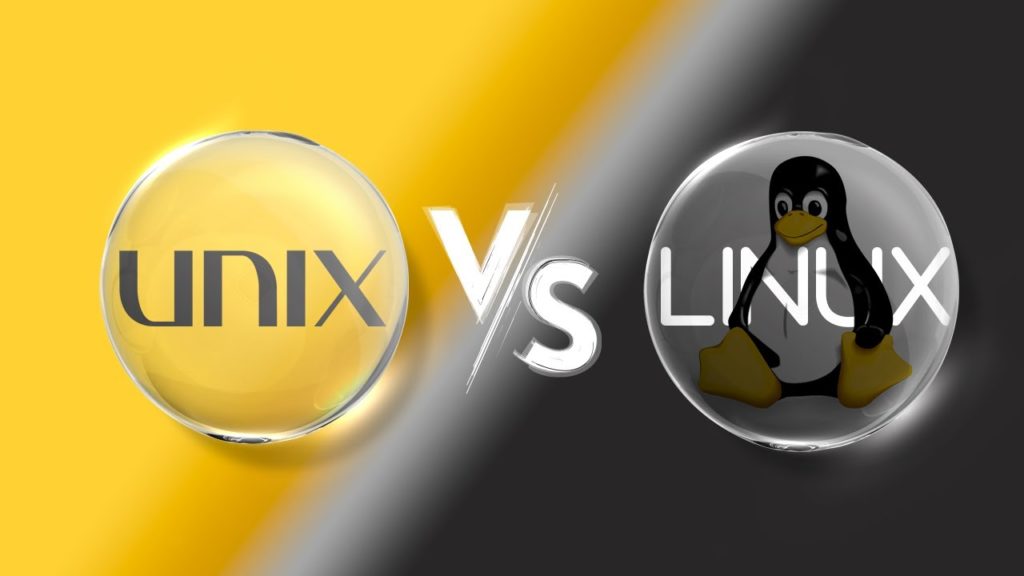When it comes to operating systems, Unix and Linux are two of the most popular choices. Both are widely used in the tech industry, but what exactly sets them apart? In this article, we’ll delve into the key differences between Unix and Linux.
Before we dive in, it’s worth noting that Unix and Linux are related but not identical. Unix was developed in the late 1960s by Bell Labs, while Linux was developed in the early 1990s by Linus Torvalds. Linux is actually based on Unix, but it’s an open-source operating system that can be freely modified and distributed.
Related: 5 Great Linux Operating Systems to Try Out in 2023
Linux Vs Unix: The Main 3 Differences
So, what are the main differences between Unix and Linux? Let’s explore.
1. Kernel
One of the main differences between Unix and Linux is their kernel. The kernel is the core component of an operating system that handles memory management, process management, and input/output operations.
Unix uses the System V kernel, which is a monolithic kernel that is loaded into memory at boot time. This kernel is designed to be efficient and fast, but it can also be difficult to modify or customize.
Linux, on the other hand, uses the Linux kernel, which is a modular kernel that can be loaded and unloaded dynamically. This makes it more flexible and easier to modify than the System V kernel. In addition, the Linux kernel is known for its strong community support and frequent updates.
Related: Getting Started With Windows Subsystem for Linux
2. File Systems
Another difference between Unix and Linux is their file systems. A file system is a method of organizing and storing files on a computer.
Unix typically uses the UFS file system, which is a simple and efficient file system that was designed for use with Unix. However, UFS can be limited in terms of scalability and compatibility with other operating systems.
Linux, on the other hand, supports a wide range of file systems, including the popular ext4 file system. In addition, Linux also supports many other file systems that are not available on Unix, such as NTFS and FAT. This makes Linux more flexible and versatile when it comes to file storage and management.
Related: How to install and use Progressive Web Apps (PWA) on Linux
3. User Interface
Finally, there’s the user interface. The user interface is the part of the operating system that allows users to interact with the computer.
Unix is known for its command-line interface, which requires users to enter text commands to perform tasks. This can be intimidating for users who are not familiar with Unix, but it can also be very powerful and efficient for experienced users.
Linux, on the other hand, typically supports both a command-line interface and a graphical user interface. The graphical user interface is similar to the interface used in Windows or macOS, making it more familiar and user-friendly for many users.
Related: Top 10 Basic Linux Commands for Absolute Beginners
Other Notable differences
- Licensing: Linux is open-source and freely available, while Unix is typically proprietary and requires a license for use.
- Development Model: Linux is developed collaboratively by a community of volunteers, while Unix is developed by various vendors and follows a closed development model.
- Customization: Linux allows for greater customization and flexibility, as it can be modified and redistributed by users, while Unix typically has more restrictions on customization.
- Community Support: Linux has a large and active community of users and developers, with extensive documentation and support available online, while Unix typically has more limited community support.
- Hardware Support: Linux has broader hardware support due to its open-source nature, while Unix may have more limited hardware support based on specific vendor compatibility.
- Cost: Linux is generally more cost-effective compared to Unix, as it is open-source and does not require costly licenses for use.
It’s important to note that while Linux and Unix share similarities, they also have significant differences in terms of licensing, development model, distribution, customization, community support, command-line interface, hardware support, and cost.
Examples of Unix and Linux Operating Systems
Here are some examples of Linux distributions and Unix flavors
Linux distributions:
- Ubuntu
- Fedora
- CentOS
- Debian
Unix flavors:
- Solaris
- AIX
- HP-UX
- macOS
Conclusion
In conclusion, Unix and Linux are two closely related but distinct operating systems. While Unix is known for its speed and efficiency, Linux is known for its flexibility and versatility. Whether you choose Unix or Linux depends on your specific needs and preferences, but both offer powerful tools and features for users and developers alike.

